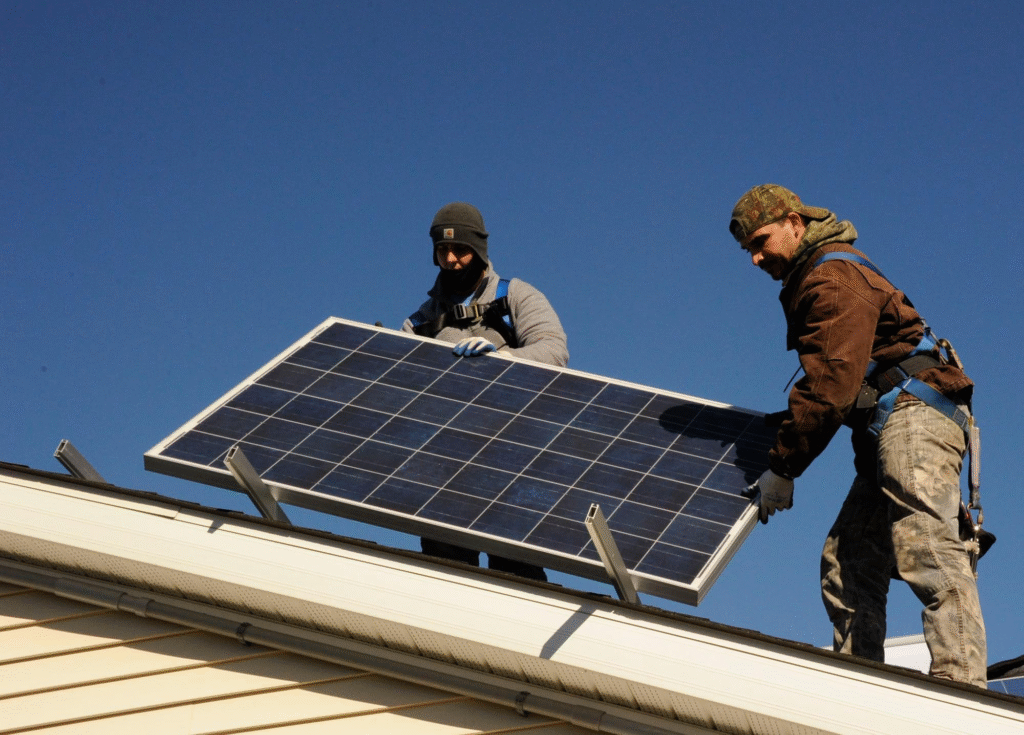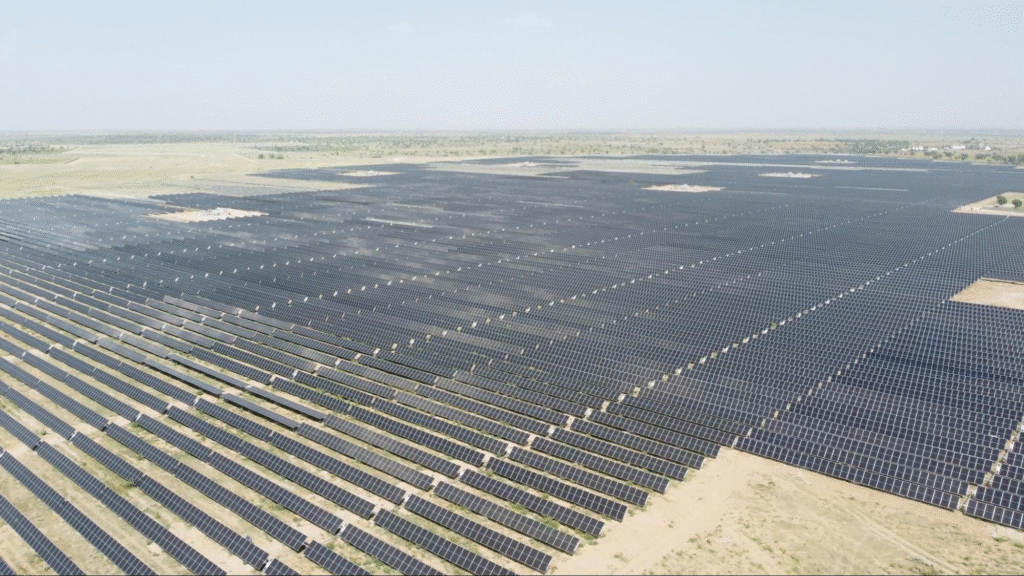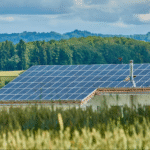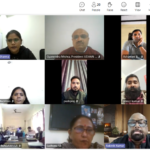CONCEPT OF SUSTAINABILITY
Sustainability is our society’s ability to exist and develop without depleting all of the natural resources needed to live in the future. Sustainable development supports this long-term goal with the implementation of systems, frameworks, and support from global, national, and local entities.
Solar energy is an important sustainable energy source because of its many benefits, namely, it has a low environmental impact, is renewable, and can help reduce our reliance on fossil fuels.
ENERGY OUTLOOK IN RURAL INDIA
India faces a significant challenge when it comes to rural electrification. Despite efforts to improve access to electricity, a substantial number of rural households remain without reliable power. According to the latest estimates, approximately 300 million people in India lack access to electricity, hampering their socioeconomic development and quality of life. In this context, solar energy emerges as a sustainable solution that has the potential to bridge this energy gap, providing rural communities with clean and reliable electricity.
Contents covered-
-current state of rural electrification in India
-the impact of energy shortages
-how solar energy is making a difference in rural areas. -benefits of solar energy
-the types of systems suitable for rural settings
-the government schemes supporting this transition. —–The Role of NGOs in Promoting Solar Power in Underserved Areas
-pros and cons FAQ
Current State of Rural Electrification
The electrification landscape in India has improved over the years, yet challenges remain. According to ‘The Economics Times’ article, around 86% of rural households have access to electricity. However, many of these households experience frequent outages and unreliable supply, leading to a considerable gap between available and needed energy.
CHALLENGES include:
-Infrastructure Limitations: The existing grid infrastructure is often outdated and inefficient, leading to significant energy losses.
-High Costs: Rural households frequently face higher electricity tariffs, making power unaffordable for many.
-Geographic Disparities: Remote and isolated communities are often the last to receive electricity, further perpetuating energy poverty.
Impact of Energy Shortage on Rural Communities
The lack of reliable electricity has far-reaching effects on rural communities –
-Socioeconomic Development: Without access to reliable power, small businesses struggle to operate, limiting economic growth and job creation. This stagnation leads to a cycle of poverty that is hard to break.
-Healthcare: Energy shortages significantly impact healthcare services. Hospitals and clinics often lack the power necessary to operate essential medical equipment, affecting patient care.
-Education: Limited access to electricity restricts educational opportunities, with students unable to study after dark due to inadequate lighting.
-Quality of Life: Daily life is hampered by the absence of electricity, affecting cooking, sanitation, and overall living conditions.
Current Impact of Solar Energy on Rural Development in India
-Solar energy has the potential to transform rural areas in India. Recent statistics reveal that the country has installed over 40 GW of solar capacity, with a growing focus on rural projects. According to the Solar Energy Corporation of India (SECI), there are now several solar-powered villages in India, showcasing successful implementations of solar technology.
-In rural areas, solar energy is more than just a source of light; it is a pathway to development. Communities are utilizing solar solutions for a range of applications, including lighting homes, powering irrigation systems, and even supplying energy to local businesses.
Benefits of Solar Energy in Rural Areas

The advantages of solar energy for rural areas are numerous:
-Cost-Effective:
By generating their own electricity, rural households and businesses can significantly lower their energy expenses. Solar panels reduce electricity bills and often lead to savings that can be invested in other areas.
-Sustainable Energy Source:
Solar energy is a clean, renewable resource that helps combat climate change. By transitioning to solar power, rural communities can reduce their carbon footprints and improve local air quality.
-Job Creation:
The solar industry generates employment opportunities in manufacturing, installation, and maintenance, stimulating local economies and empowering communities.
-Energy Independence:
Solar energy offers rural areas the ability to generate their own power, reducing dependence on the often unreliable grid.
–Improved Quality of Life:
Access to electricity enhances overall quality of life, improving healthcare, education, and economic opportunities.
Types of Solar Systems Suitable for Rural Settings
Several types of solar systems are well-suited for rural environments, each with its unique advantages:
-Grid-Connected Systems:
These systems connect to the national grid, allowing users to sell excess power back to the grid. This setup provides a reliable power source while enabling additional income for households and businesses.
-Off-Grid Systems:
Ideal for remote areas without access to the grid, off-grid solar systems provide complete energy independence. They are particularly useful for villages that experience frequent power outages.
-Hybrid Systems:
Combining solar energy with other power sources, such as diesel generators, hybrid systems offer flexibility and reliability. They are especially beneficial in regions where solar availability may be inconsistent.
-Rooftop Systems:
Residential Rooftop solar panels utilize available space on buildings and homes, making them an excellent option for small businesses and households. These systems are easy to install and can significantly reduce energy costs.
Different Government Schemes for Rural Areas
To support the transition to solar energy in rural areas, the Indian government has introduced several schemes:
This initiative aims to provide electricity to all households, focusing on rural electrification through solar power.
- Grid Connected Rooftop Solar Scheme
This scheme named Pradhan Mantri Muft Bijli Yojna offers subsidies for installing rooftop solar systems, making solar energy more accessible for rural households and businesses.
This program encourages farmers to install solar pumps for irrigation, reducing their dependence on conventional energy sources.
- Rural Solar Power Plant Scheme
This initiative supports the establishment of solar power plants in rural areas, aiming to increase local electricity generation.
The Role of NGOs in Promoting Solar Power in Underserved Areas
Access to reliable electricity remains a distant dream for many underserved and remote communities in India. While government programs aim to bridge the energy divide, the efforts of non-governmental organizations (NGOs) have been instrumental in accelerating the spread of solar energy solutions. NGOs act as crucial facilitators—raising awareness, mobilizing resources, training local communities, and ensuring the long-term sustainability of solar power projects. This article also explores how NGOs are empowering marginalized populations and providing Solar Power for Villages through clean energy access and driving real change at the grassroots level.

FAQs
Q-What Are the Pros and Cons of Using Solar Energy for Your Home?
Using solar energy for your home will save you money, increase your home value, help you become energy independent, and will decrease your carbon footprint. However, the large solar panels may alienate potential buyers. Furthermore, some HOA agreements may not allow you to install solar panels on your home.
Q-Do Solar Panels Increase Your Property Taxes?
Because installing solar panels increases the value of your home, they can also increase your property taxes. However, many states offer exemptions for residents. Check your county clerk’s website for the most accurate, up-to-date information.
Q-Can You Still Have a High Electric Bill With Solar Panels?
In nearly every case, installing solar panels will lower your monthly electric bill.
Q-Are There Tax Benefits for Solar Panels?
Yes. There are several tax benefits for installing solar panels in India, including:
- Accelerated depreciation
Businesses can depreciate 40% of the total cost of solar panel installations in the first year, which can significantly reduce taxable income. - Tax holiday
Solar power generating companies can receive a 100% tax exemption on profits for 10 consecutive years within the first 15 years of operation. - Reduced Goods and Services Tax (GST)
The GST rate for solar power generating systems and their components is 5%. Capital subsidies
The Ministry of New and Renewable Energy (MNRE) and several state governments offer capital subsidies for residential rooftop solar installations, which can cover the installation cost. - Net metering incentives
Residential and commercial customers can generate electricity with solar panels and export surplus energy to the grid, which can reduce future electricity bills.
Major Solar Energy Projects in the World
The largest solar energy plant in the entire world is located in Rajasthan, India. The Bhadla Solar Park, which was completed in April 2020, boasts some impressive statistics. The plant occupies 10,000 acres and has an installed capacity of 2,245 megawatts. The total investment in the project is estimated to be around $1.4 billion.

The largest solar park in the United States is known as the Solar Star park near Rosamond, California. The power station consists of two separate installations named Solar Star-1 and Solar Star-2, with respective capacities of 314MW and 265MW. Like the plant in India, the location was selected due to its large exposure to the sun and minimal rain.
Conclusion
Solar energy holds the key to bridging the energy gap in rural India. By providing a sustainable and reliable power source, solar energy can empower communities, drive economic growth, and improve quality of life.












